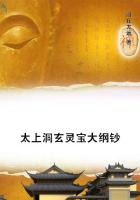PYTHAGORAS AND HIS PHILOSOPHY
IT is a matter for enduring regret that so little is known to us concerning PYTHAGORAS. What little we do know serves but to enhance for us the interest of the man and his philosophy, to make him, in many ways, the most attractive of Greek thinkers; and, basing our estimate on the extent of his influence on the thought of succeeding ages, we recognise in him one of the world's master-minds.
PYTHAGORAS was born about 582 B.C. at Samos, one of the Grecian isles.
In his youth he came in contact with THALES--the Father of Geometry, as he is well called,--and though he did not become a member of THALES'
school, his contact with the latter no doubt helped to turn his mind towards the study of geometry. This interest found the right ground for its development in Egypt, which he visited when still young.
Egypt is generally regarded as the birthplace of geometry, the subject having, it is supposed, been forced on the minds of the Egyptians by the necessity of fixing the boundaries of lands against the annual overflowing of the Nile. But the Egyptians were what is called an essentially practical people, and their geometrical knowledge did not extend beyond a few empirical rules useful for fixing these boundaries and in constructing their temples.
Striking evidence of this fact is supplied by the AHMES papyrus, compiled some little time before 1700 B.C. from an older work dating from about 3400 B.C.,[1] a papyrus which almost certainly represents the highest mathematical knowledge reached by the Egyptians of that day.
Geometry is treated very superficially and as of subsidiary interest to arithmetic; there is no ordered series of reasoned geometrical propositions given--nothing, indeed, beyond isolated rules, and of these some are wanting in accuracy.
[1] See AUGUST EISENLOHR: _Ein mathematisches Handbuch der alten Aegypter_ (1877); J. Gow: _A Short History of Greek Mathematics_(1884); and V. E. JOHNSON: _Egyptian Science from the Monuments and Ancient Books_ (1891).
One geometrical fact known to the Egyptians was that if a ******** be constructed having its sides 3, 4, and 5 units long respectively, then the angle opposite the longest side is exactly a right angle; and the Egyptian builders used this rule for constructing walls perpendicular to each other, employing a cord graduated in the required manner.
The Greek mind was not, however, satisfied with the bald statement of mere facts--it cared little for practical applications, but sought above all for the underlying REASON of everything.
Nowadays we are beginning to realise that the results achieved by this type of mind, the general laws of Nature's behaviour formulated by its endeavours, are frequently of immense practical importance--of far more importance than the mere rules-of-thumb beyond which so-called practical minds never advance. The classic example of the utility of seemingly useless knowledge is afforded by Sir WILLIAM HAMILTON'S discovery, or, rather, invention of Quarternions, but no better example of the utilitarian triumph of the theoretical over the so-called practical mind can be adduced than that afforded by PYTHAGORAS. Given this rule for constructing a right angle, about whose reason the Egyptian who used it never bothered himself, and the mind of PYTHAGORAS, searching for its full significance, made that gigantic geometrical discovery which is to this day known as the Theorem of PYTHAGORAS--the law that in every right-angled ******** the square on the side opposite the right angle is equal in area to the sum of the squares on the other two sides.[1]
The importance of this discovery can hardly be overestimated.
It is of fundamental importance in most branches of geometry, and the basis of the whole of trigonometry--the special branch of geometry that deals with the practical mensuration of triangles.
EUCLID devoted the whole of the first book of his _Elements of Geometry_ to establishing the truth of this theorem; how PYTHAGORASdemonstrated it we unfortunately do not know.
[1] Fig. 3 affords an interesting practical demonstration of the truth of this theorem. If the reader will copy this figure, cut out the squares on the two shorter sides of the ******** and divide them along the lines AD, BE, EF, he will find that the five pieces so obtained can be made exactly to fit the square on the longest side as shown by the dotted lines.
The size and shape of the ******** ABC, so long as it has a right angle at C, is immaterial. The lines AD, BE are obtained by continuing the sides of the square on the side AB, _i.e_. the side opposite the right angle, and EF is drawn at right angles to BE.
After absorbing what knowledge was to be gained in Egypt, PYTHAGORAS journeyed to Babylon, where he probably came into contact with even greater traditions and more potent influences and sources of knowledge than in Egypt, for there is reason for believing that the ancient Chaldeans were the builders of the Pyramids and in many ways the intellectual superiors of the Egyptians.
At last, after having travelled still further East, probably as far as India, PYTHAGORAS returned to his birthplace to teach the men of his native land the knowledge he had gained. But CROESUS was tyrant over Samos, and so oppressive was his rule that none had leisure in which to learn.
Not a student came to PYTHAGORAS, until, in despair, so the story runs, he offered to pay an artisan if he would but learn geometry.
The man accepted, and later, when PYTHAGORAS pretended inability any longer to continue the payments, he offered, so fascinating did he find the subject, to pay his teacher instead if the lessons might only be continued. PYTHAGORAS no doubt was much gratified at this;and the motto he adopted for his great Brotherhood, of which we shall make the acquaintance in a moment, was in all likelihood based on this event.
It ran, "Honour a figure and a step before a figure and a tribolus";or, as a freer translation renders it:--















